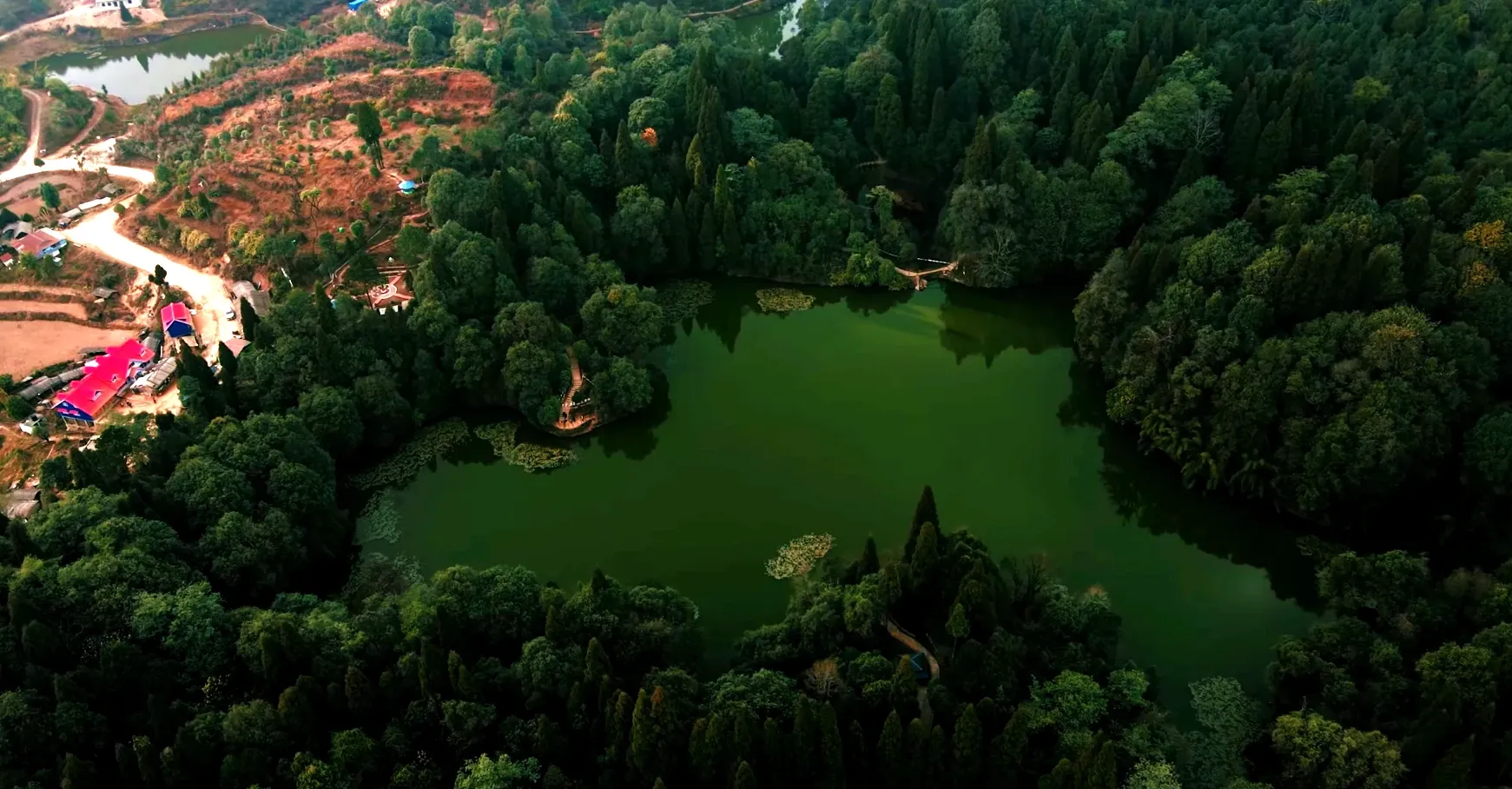(toc) #title=(Table of Content)
Mai Pokhari of Ilam : A Tranquil Gem in the Hills of East Nepal
Synopsis: Mai Pokhari in Ilam, Nepal, is a serene and picturesque lake nestled in the Eastern Himalayas, offering an idyllic retreat amidst lush greenery and majestic mountains. Esteemed for its natural beauty, rich biodiversity, and profound cultural significance to the Limbu community, it provides a tranquil escape for nature lovers, spiritual seekers, and adventurers. The area is accessible via scenic routes, presenting opportunities for trekking, cultural immersion, and wildlife observation. (alert-success)
 |
| View of Mai-Pokhari |
Introduction
1. Geographic Location and Accessibility
2. Natural Beauty and Biodiversity
3. Cultural and Spiritual Significance
4. Adventure and Trekking
5. Accommodation and Hospitality
6. Responsible Tourism and Conservation
7. Capturing Memories and Photography
8. Seasons of Mai Pokhari
9. Connecting with Local Communities
10. Conservation Initiatives
11. Getting Off the Beaten Path
12. The Culinary Delights of Ilam
Extend your exploration beyond Mai Pokhari to savor the culinary delights of Ilam. Known for its tea gardens, Ilam offers a range of flavors unique to the region. Visitors can indulge in tea tasting, sampling local delicacies, and experiencing the rich gastronomic tapestry that complements the natural beauty of the area.
13. Night Skies and Stargazing
14. Sustainable Souvenirs
In Conclusion
Mai Pokhari in Ilam stands as a hidden gem, offering a unique blend of natural beauty, cultural heritage, and adventure. With its pristine lake, stunning landscapes, and warm hospitality, Mai Pokhari has the potential to captivate the hearts of travelers seeking tranquility and an authentic Himalayan experience. By promoting responsible tourism, we ensure the preservation of this enchanting destination for future generations. Plan your journey to Mai Pokhari, Ilam, and immerse yourself in a serenity that will linger in your memories for a lifetime.
Mai Pokhari promotes responsible tourism and conservation, ensuring its pristine environment remains intact. Accommodations around the lake prioritize eco-friendliness and hospitality, enhancing visitors' experiences. Ideal for photography, stargazing, and engaging with local traditions, Mai Pokhari stands as a testament to the harmonious blend of nature and culture, making it a must-visit destination for those seeking peace and authentic Himalayan adventures.(code-box)
Frequently Asked Questions (FAQs)
1. Is Mai Pokhari suitable for all types of travelers?
Absolutely! Mai Pokhari caters to a diverse range of travelers, including nature lovers, adventure enthusiasts, and those seeking a tranquil retreat.
2. What is the best time to visit Mai Pokhari for optimal weather conditions?
The summer and autumn months offer ideal weather conditions. Summer brings lush greenery, while autumn provides clear skies for stunning reflections on the lake.
3. Are there guided trekking tours available to explore Mai Pokhari?
Yes, several guided trekking tours, including the popular "Mai Pokhari Cultural Trek," offer insights into the local culture and natural beauty of the region.
4. How can visitors contribute to the conservation efforts of Mai Pokhari?
Travelers can contribute by following eco-friendly practices, respecting local customs, and supporting community-led conservation initiatives.
5. Are there photography restrictions at Mai Pokhari?
There are no specific photography restrictions. Visitors are encouraged to capture the beauty of Mai Pokhari but should be mindful of the environment and local privacy.
6. Can Mai Pokhari be visited throughout the year?
While the summer and autumn months are popular, Mai Pokhari can be visited throughout the year, each season offering a unique experience.
7. Is camping allowed around Mai Pokhari?
Camping is generally allowed, but visitors should adhere to local regulations and ensure responsible camping practices.
8. Are there opportunities for bird watching around Mai Pokhari?
Yes, Mai Pokhari's rich biodiversity includes various bird species, providing excellent opportunities for bird watching enthusiasts.
9. What are the transportation options from Ilam to Mai Pokhari?
Travelers can reach Mai Pokhari from Ilam by road or air. Flights from Kathmandu to Bhadrapur Airport are followed by a scenic drive to the lake.
10. Are there cultural events at Mai Pokhari that visitors can participate in?
Yes, the Limbu community celebrates a festival at Mai Pokhari during the full moon day in November. Visitors are welcome to witness and participate in these cultural events.

